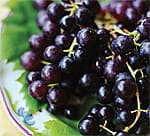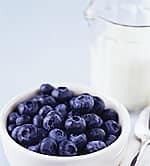Life Extension Magazine®
One of the most frightening tragedies in life is witnessing dementia rob a loved one of their memory, personality, and dignity. While there are not yet cures for these mind-destroying diseases, scientists are discovering that cognitive deterioration need not be an “inevitable” result of aging. In fact, increasing evidence suggests that cognitive decline and even dementia are preventable, and to some extent perhaps even reversible.1 According to a report from the Alliance for Health and the Future, “individuals can take steps to maintain cognitive health throughout life.”1 In this article, we will explore targeted strategies to help readers take those steps and provide updates from new studies that corroborate these findings. The Aging Brain—The Molecular ViewA remarkable review article by the Human Nutrition Research Center on Aging at Tufts University in Boston provides a comprehensive summary of what we know about brain aging and the special significance of nutrients in slowing down or preventing this process.2 According to scientists, many factors at the cellular and molecular levels account for the behavioral deficits so long assumed to be part of “normal” aging, especially changes in the way cells handle neurotransmitters (the molecules that nerve cells use to communicate with one another).3-6 The resulting loss of neuron function is manifested as changes in both cognitive and motor behaviors that we associate with the aging brain.7,8 Critically, the scientists observe, “substantial research indicates that factors such as oxidative stress and inflammation may be major contributors to the behavioral decrements seen in aging.”2,9-11 According to growing research, there is just no question that oxidative stress is one of the most important deleterious factors for aging brain cells, resulting in decreased availability of natural antioxidants such as glutathione and increased oxidative destruction of vital lipid molecules in cell membranes12—all of which impair cells’ ability to communicate effectively. Not only is the central nervous system especially vulnerable to oxidative stress in general, but it becomes progressively more so with advancing age,13,14 as structural changes in cells accumulate. Inflammation adds insult to oxidative injury in the central nervous system.2 Even by middle age, there is an increase in the production of inflammatory proteins;15 by the time “old age” has set in, it no longer even requires a true inflammatory stimulus to launch the process.16 Still worse, when a genuine inflammatory stimulus arises (say, a minor infection or further oxidant stress), older brains react by producing still more inflammatory cytokines such as tumor necrosis factor-alpha (TNF-alpha) and interleukin-6 (IL-6) than younger brains.17,18 In fact, scientists have noted that, “up-regulation of C-reactive protein [a ubiquitous marker of inflammation] may represent one factor in biological aging.”2
The interactions of inflammation and free oxygen radicals perpetuate a cycle of cell damage and dysfunction.2 Animal models of the central nervous system demonstrate that inflammation produces changes that mimic aging in the ways they influence cellular interactions, and in the ways they influence actual behavior. The Tufts review recounts a stunning series of experiments, for example, showing that injection of a potent bacterial toxin into brain tissue “can reproduce many of the behavioral, inflammatory, neurochemical, and neuropathologic changes seen in the brains of patients with Alzheimer disease… as well as producing changes in spatial learning and memory behavior.” The ability of many plant food components to reduce or block the effects of the oxidation-inflammation-oxidation cycle has captured the attention of researchers. The benefical way these plant compounds affect behavioral and neuronal aspects of aging has stimulated intense research into this area of dementia prevention.2 Let’s take a systematic tour of the world of cognition-enhancing nutritional ingredients that show promise in protecting against some of the long-term effects of age-related oxidant/inflammatory damage on the human brain. Berries and Grapes: Plant Polyphenols Preserve MemoryPolyphenols are plant molecules with a remarkable array of characteristics, notably their potent antioxidant capabilities;19 people with a high consumption of these molecules have lower rates of neurodegenerative disorders including Alzheimer’s disease.20 Grape skins and seeds are especially rich in a group of polyphenols known as proanthocyanidins, which are proving to have astonishing anti-aging effects in the brain. Interestingly, grape seed extracts were first studied for their beneficial effects on cardiovascular function;21 cardiovascular disease is an important risk factor in the development of dementia.22 Grape seed extracts have subsequently been shown to have anti-stress and neuroprotective capabilities, preserving rats’ cognitive function in the face of stressors—clearly a highly valuable benefit.23 Interestingly, the reduction in oxidant injury to brain cells increases concentrations of the vital neurotransmitter acetylcholine in animals fed grape seed extract.24 We have recently learned that grape seed extract induces actual neuroprotective changes in brain protein composition, suggesting in the words of one researcher that “grape seed extract may have impact on the actions of psychoactive drugs by maintaining an overall viability of the nervous system.”25
The most exciting and dramatic research on grape seed extract and cognition is in Alzheimer’s disease, where it has long been known that moderate red wine consumption is protective.26 Researchers in psychiatry at Mt. Sinai in New York demonstrated why: in mice fed a concentrated grape seed extract, there was significant reduction in deposits of the damaging amyloid-beta proteins associated with Alzheimer’s disease, and a concomitant reduction in cognitive deterioration.27 The observation that grape seed extract not only blocks amyloid formation but also prevents the resulting brain cell injury suggested to UCLA researchers that “[grape seed extract] is worthy of consideration as a therapeutic agent for Alzheimer’s disease.”26 Tufts University researchers led by Dr. James Joseph have long pursued other sources of antioxidant polyphenols as a means of preventing changes associated with the aging brain.28,29 In 1999, Dr. Joseph’s group demonstrated that blueberries are potent sources of these neuroprotective polyphenols, improving rats’ performance on a host of cognitive tasks, as well as enhancing the release of vital neurotransmitters from aged brain cells.30 Groundbreaking work in 2003 demonstrated that in a mouse model of Alzheimer’s disease, blueberry supplementation prevented cognitive deficits even while brain levels of amyloid-beta remained high.31 Since these mice have actual human genes that predispose them to this disease, scientists concluded “for the first time that it may be possible to overcome genetic predispositions to Alzheimer disease through diet.” Not content to stop there, scientists explored the mechanisms by which blueberries enhance learning and memory in a study of the hippocampus—the brain region where memories are processed, and which loses neurons with age.32 When they supplemented aging animals with blueberries, the researchers identified improvements in the rate at which hippocampal cells form and develop receptors for neurotransmitters. They found that these structural changes correlated well with actual improvements in spatial memory. The research team also showed that blueberry polyphenol molecules can cross the vital blood-brain barrier, and hence that they exert their potent neuroprotection directly within the brain.33 Finally, in late 2008, neuroscientists at the University of South Florida discovered that blueberry extracts actually prevent the final steps in formation of the dangerous amyloid-beta proteins in Alzheimer’s disease.34 They concluded that these findings could explain the recovery seen in supplemented animals and that supplementation could tip the scales away from formation of these destructive proteins in those at risk for Alzheimer’s disease.34
Vinpocetine Manages Brain Blood FlowTo support its many vital functions, the brain receives a huge proportion of total blood flow, and has a powerful and exquisitely sensitive mechanism for regulating that flow through control of blood vessel tone.35 One cause of cognitive decline with age is the gradual diminution of blood flow to vital areas, along with a decreased responsiveness to moment-by-moment needs, much of which results from oxidant damage to vessels.36,37
A little-known compound called vinpocetine, derived from the common periwinkle plant, has shown great promise in improving cerebral blood flow and restoring lost cognitive abilities. Vinpocetine appears to work by inhibiting the action of an enzyme called phosphodiesterase 1 (PDE1), resulting in relaxation of cerebral blood vessel walls and increased cerebral blood flow. This mechanism is similar to that of much better-known drugs such as sildenafil (Viagra®),38,39 which helps restore vital blood flow by inhibiting phosphodiesterase 5 (PDE5). Additionally, vinpocetine helps support cerebral glucose metabolism by enhancing glucose supply to brain tissue.40,41 As early as 1987, geriatricians showed that vinpocetine could produce a significant improvement in elderly patients with chronic cerebral dysfunction.42 The researchers gave vinpocetine supplements to 42 sufferers for 90 days, while control patients received placebo. Supplemented patients scored better on all effectiveness scales, which included measures of cognition and overall mental status. No side effects were reported. A much larger, controlled, randomized trial followed in 1991, when another group of Britons studied 203 patients with mild-to-moderate forms of cognitive impairment, giving them vinpocetine or placebo for 16 weeks.43 Again, no side effects were noted, and there were significant improvements in the supplemented group’s performance on cognitive performance scales. In 2003, a Bulgarian research group summarized evidence that vinpocetine can actually protect brain tissue from the effects of asymptomatic cerebrovascular disease, the silent blood vessel damage that precedes a stroke.44 Their landmark paper cited the supplement’s ability to interfere at various stages in the cascade of events leading to stroke, including its antioxidant powers, its inhibition of damage caused by overstimulation of nerve cells, and prevention of free radical release. They showed that vinpocetine passes rapidly across the blood-brain barrier, and that it is selectively accumulated in parts of the brain most closely related to cognitive function. Finally, the review cited the known beneficial effects of vinpocetine on cerebral blood flow. The paper concluded, “vinpocetine may also become a new therapeutic approach to prophylactic neuroprotection in patients at high risk of ischemic stroke.” A 2005 clinical study in Hungary clinched the effects of vinpocetine on brain blood flow.45 In this elegant study, patients with multiple past strokes underwent ultrasound scans of brain blood vessels to examine flow, and three months later performed a battery of cognitive tests. Supplemented patients’ brain blood flow was significantly improved compared with placebo recipients—and on cognitive tests, placebo patients deteriorated significantly while supplement recipients had no change at three months. This study dramatically demonstrated both the cause and the effect of neuroprotection by vinpocetine! Most of the groundbreaking work on vinpocetine has been done in European countries, and experts there recently wrote that the supplement “improves the blood flow and the metabolism of the affected brain areas. There is increasing evidence that vinpocetine improves the quality of life in chronic cerebrovascular patients.”46 Such findings are leading more researchers to recommend the use of vinpocetine for the treatment of patients with mild cognitive impairment.47 Phosphatidylserine Maintains Cellular Integrity in the BrainBrain cells’ electrical activity and hence overall function depends critically on the status of their membranes, which are composed of a complex mix of proteins and specialized fat molecules called phospholipids, the most predominant being phosphatidylserine.48,49 Since 1990, evidence has been growing that phosphatidylserine therapy is beneficial for preserving and even restoring brain function.50 In 1992, memory experts in Bethesda studied 51 people who met criteria for probable Alzheimer’s disease, treating them with phosphatidylserine (300 mg/day) or placebo.51 Phosphatidylserine recipients showed improvement on several cognitive measures compared with placebo recipients; benefits were most prominent among those who began with less severe impairment. The researchers noted that “phosphatidylserine may be a promising candidate for study in the early stages of Alzheimer’s disease.”
As scientists’ interest grew in preventing the inflammation produced by amyloid-beta in the brain cells of patients with Alzheimer’s disease, many researchers naturally turned to phosphatidylserine as a potential inhibitor of inflammation. Japanese neuropsychiatrists discovered that they could inhibit production of free oxygen radicals, and of the inflammatory cytokine TNF-alpha, if they pretreated amyloid-infested brain cells with phosphatidylserine,52 demonstrating powerful neuroprotective properties. Those properties were demonstrated in live animals by Canadian scientists who supplemented aged beagles with phosphatidylserine along with ginkgo biloba, vitamin E, and vitamin B6.53 The aged dogs, previously impaired on tests of visuo-spatial memory, improved their accuracy significantly after supplementation—and the improvement was long-lived. In mid-2008, German sports physiologists demonstrated positive effects of phosphatidylserine supplements on brain activity and cognition following mental stress (stress tends to worsen any given degree of cognitive impairment).54 They tested 16 healthy subjects on a cognitive test battery while they were connected to a brainwave scanner (EEG), enabling them to monitor actual brain activity along with cognitive performance. After baseline testing, the subjects were given phosphatidylserine or placebo for 42 days, and were then re-tested and re-scanned. Supplemented patients demonstrated brainwave activity strongly associated with a greater state of relaxation than was experienced by the placebo group. This exciting work suggests that, in addition to objective improvement in cognitive tasks, phosphatidylserine can also cut down on stress that interferes with performance of those tasks. Evidence for phosphatidylserine has finally managed to convince the ever-skeptical FDA. In 2003, the agency gave “qualified health claim” status to phosphatidylserine, noting that “consumption of phosphatidylserine may reduce the risk of dementia in the elderly” and “consumption of phosphatidylserine may reduce the risk of cognitive dysfunction in the elderly.”55 GPC Reverses Cognitive ImpairmentStudies suggest that GPC (glycerophosphocholine), a compound related to phosphatidylcholine, may help prevent, halt, or even partially reverse cognitive impairment in the early stages of senile dementia.56,57 GPC helps boost brain function via several mechanisms. GPC helps stimulate the manufacture of new acetylcholine, a neurotransmitter involved in memory and cognition. It also stimulates release of the neurotransmitter GABA (gamma-aminobutyric acid), making more GABA available to brain cells. Dwindling levels of GABA in the elderly may partly account for early cognitive impairment, contributing to the dementia, mood disorders, and confusion seen in degenerative brain conditions such as Alzheimer’s disease.58 The cognitive benefits of GPC have been demonstrated in numerous human studies. A multicenter study of patients with probable Alzheimer’s disease showed that GPC improved cognition and was well tolerated.59 In a review of 13 published clinical trials involving 4,054 patients with age-related memory loss or vascular dementia caused by stroke or mini-stroke (transient ischemic attack), scientists found that GPC helped improve memory and attention, and significantly improved patients’ clinical conditions.56 A controlled, multicenter study showed that GPC improved cognitive function in 261 patients with mild-to-moderate Alzheimer’s disease. Each day for six months, the patients received either GPC or placebo. At the study’s end, patients who received GPC performed better on several standardized psychological tests of cognitive function. In contrast, a measure of cognitive function worsened in the placebo group. Individuals who received GPC also demonstrated behavioral improvements and improvements in physician ratings. The study findings support GPC’s efficacy in treating the cognitive symptoms of dementia disorders such as Alzheimer’s.60 Remarkably, these results resemble those achieved with Alzheimer’s disease drugs such as Aricept® and Exelon®. Unlike those drugs, however, GPC is easy to tolerate, with no serious side effects.60 | |||||||
UMP’s Role in Cognition EnhancementAnother approach to cognition and memory enhancement is the use of a substance known as uridine-5’-monophosphate (UMP), which helps comprise RNA, the DNA-like structure that cells use to create proteins from blueprints in genes. UMP supplementation in animals dramatically increases the production of vital brain cell membrane structural molecules, such as CDP-choline.61 Such structural molecules are vital for cell growth and repair, and even more importantly, for proper function of the synapses, the relay points at which brain and nerve cells communicate with each other.62 UMP supplementation in animals not only increases the synthesis of those vital proteins and phospholipids, but it actually helps stimulate production of neurotransmitters and of the tiny but critical cell outgrowths called neurites63 that are themselves formed and then remodeled in the process of learning64-66 and of cell repair.67 Brain scientists at MIT took those observations to a higher level when they supplemented nutritionally impoverished rats with UMP and studied the effects on memory.68 The animals were given either a control or a UMP-supplemented diet, and assessed for learning and memory skills. As expected, the impoverished animals fed a control diet did poorly on memory-dependent learning tasks, but those deficits were dramatically prevented in the UMP-supplemented group. One result of studies such as this one is the now-routine addition of UMP to infant formulas to promote healthy brain development.69 Declining ability to produce or respond to the neurotransmitter acetylcholine is one of the hallmarks of Alzheimer’s disease and other disorders of memory. In 2007, the MIT research group found that they could increase acetylcholine concentrations in aged rats with UMP supplementation.70 This is a stunning finding, since drugs like Aricept® that are used to treat Alzheimer’s disease work by inhibiting the enzyme that breaks down acetylcholine—an approach that has had mixed success and may cause serious side effects.71 The same MIT researchers, partnering with Turkish neuroscientists, have recently shown that UMP, together with the omega-3 fatty acid docosahexaenoic acid (DHA), can restore function in an animal model of Parkinson’s disease as well.72 And the same team demonstrated in late 2008 that they could actually enhance the learning and memory improvements caused by DHA in gerbils by adding UMP to the supplementation.73 They concluded, “these findings demonstrate that [UMP/DHA supplements] can enhance cognitive functions in normal animals” (emphasis added).74 In other words, one needn’t already have cognitive impairment to enjoy the potential benefits of UMP supplementation on learning and memory—and who wouldn’t want better memory even at baseline?
Ashwagandha Relieves Stress, Enhances CognitionNumerous herbs from ancient India are reputed to promote physical and mental health, improve defense mechanisms of the body, and enhance longevity. Among the most promising of these for promoting cognitive health is a plant known as ashwagandha. Indian researchers characterized the powerful antioxidant capabilities of ashwagandha extracts in 1997, showing that they increased concentrations of natural antioxidants in animal brains after supplementation.75 These researchers concluded that their findings explained the anti-stress, immunomodulatory, cognition-facilitating, anti-inflammatory, and anti-aging effects reported by other researchers in animal and clinical studies. The same group later found that they could reduce the chronic stress effects of a mild, unpredictable foot shock in rats if they first supplemented them with ashwagandha extracts.76 Untreated animals experienced elevated blood sugar, glucose intolerance, increased stress steroid levels, gastric ulcers, male sexual dysfunction, cognitive deficits, and depression—common findings in humans exposed to chronic stress—but administration of ashwagandha extracts an hour before shocks dramatically attenuated all of these outcomes. As we noted with phosphatidylserine above, reduced stress allows increased focus on tasks and therefore better cognitive performance, in addition to simply improving quality of life.
A different Indian scientific group studied ashwagandha in diabetic rats, reasoning that the memory impairment seen in diabetes is in part related to oxidative damage in brain regions that are pivotal in memory and the ability to detect and process new information.77 They found a significant increase in production of oxidation end products in those brain regions, and a decrease in cognitive function, after the rats became diabetic. But following supplementation, the oxidative damage in the relevant brain regions was significantly reduced, as were blood glucose levels. Dramatically, memory impairment and motor dysfunction were also improved in the supplemented animals. In 2007, further support for the use of ashwagandha extracts in Alzheimer’s disease was provided by the discovery that the extracts are among the most potent inhibitors of acetylcholinesterase, an enzyme that breaks down the vital memory-related neurotransmitter acetylcholine.78 Drugs that block acetylcholine breakdown (such as Aricept®) are utilized in the management of Alzheimer’s disease. The researchers correctly observed that “these results partly substantiate the traditional use of these herbs for improvement of cognition.” Western research into the benefits of ashwagandha is very recent, so stay tuned for additional exciting news on this extract’s memory- and cognition-enhancing properties. Herbal Extracts Spice up MemoryIt is now apparent that many traditional spices, in addition to adding interest to our food, can provide vital anti-inflammatory and antioxidant function that is having an impact on how we think about chronic illness and aging.79 Three of these in particular deserve special mention for their powerful effects on learning and memory. Ginger is an age-old part of Asian kitchens and pharmacopeias,80 and we focus on it here especially for its ability to regulate platelet aggregation, which contributes not only to cardiovascular disease but also to cerebrovascular disease risk.81-84 Experimental studies demonstrated early in the millennium that ginger extracts could protect cells from the inflammatory action of the Alzheimer’s disease-related protein amyloid-beta.85-87 By its blood pressure-lowering effects, ginger can protect against the chronic brain injury caused by hypertension.82 Rosemary is an herb more familiar in Western kitchens, but has an equally distinguished record as a neuroprotectant through its antioxidant constituent, carnosic acid.88 Rosemary extracts block damaging lipid peroxidation, the destruction of brain cells’ fatty membranes that impairs cognitive performance.89 Rosemary also protects cell nuclei from DNA damage that results from both oxidant stress and ultraviolet light90—such damage is at the root of many cancers, but short of cancer it can impair a cell’s ability to function normally. Neuroscientists in England recently showed a remarkable capacity of rosemary: humans exposed just to the aroma of its essential oil performed significantly better on overall memory quality compared with controls.91 Subjects also had increased states of alertness compared with controls or those exposed to lavender aroma. Completing the culinary triad of memory-enhancing herbs is hops, the bitter ingredient of beer. Hops’ value may be primarily in its ability to promote relaxation and sleep—in one study, the combination of hops with valerian compared equally with a Valium®-like, sleep-inducing drug, and had none of the “hangover” effects seen with the drug.92 Similar results were found in another study comparing a Valium®-like drug with a hops/valerian combination: both groups did equally well on sleep, relaxation, and quality of life improvement, but patients experienced withdrawal symptoms when they stopped taking the drug.93 ConclusionFar from being an “inevitable” consequence of aging, we now understand that cognitive decline and memory deficits are the predictable results of a lifetime of oxidative and inflammatory injury that damages brain cells’ ability to communicate with one another. A vast array of valuable nutrients are available to help block that damage—and in some cases to actually reverse it. Strong evidence abounds that the nutrients described in this review have important roles in improving the quality of life of older adults, keeping their wits sharp and their experiences vivid. These nutrients together, therefore, make up a vital part of any long-term brain health regimen. If you have any questions on the scientific content of this article, please call a Life Extension Wellness Specialist at 1-800-226-2370. | ||||
| References | ||||
|







